
Bring Them Home
How 100 hostages were miraculously freed Easy Citrus Chicken
A favorite of Chabad’s Popup Kitchen
Faith, Life & Choice
What is Judaism’s approach to abortion to abortion
Pizza in the Park
Life as the spouse of an Air National Guard
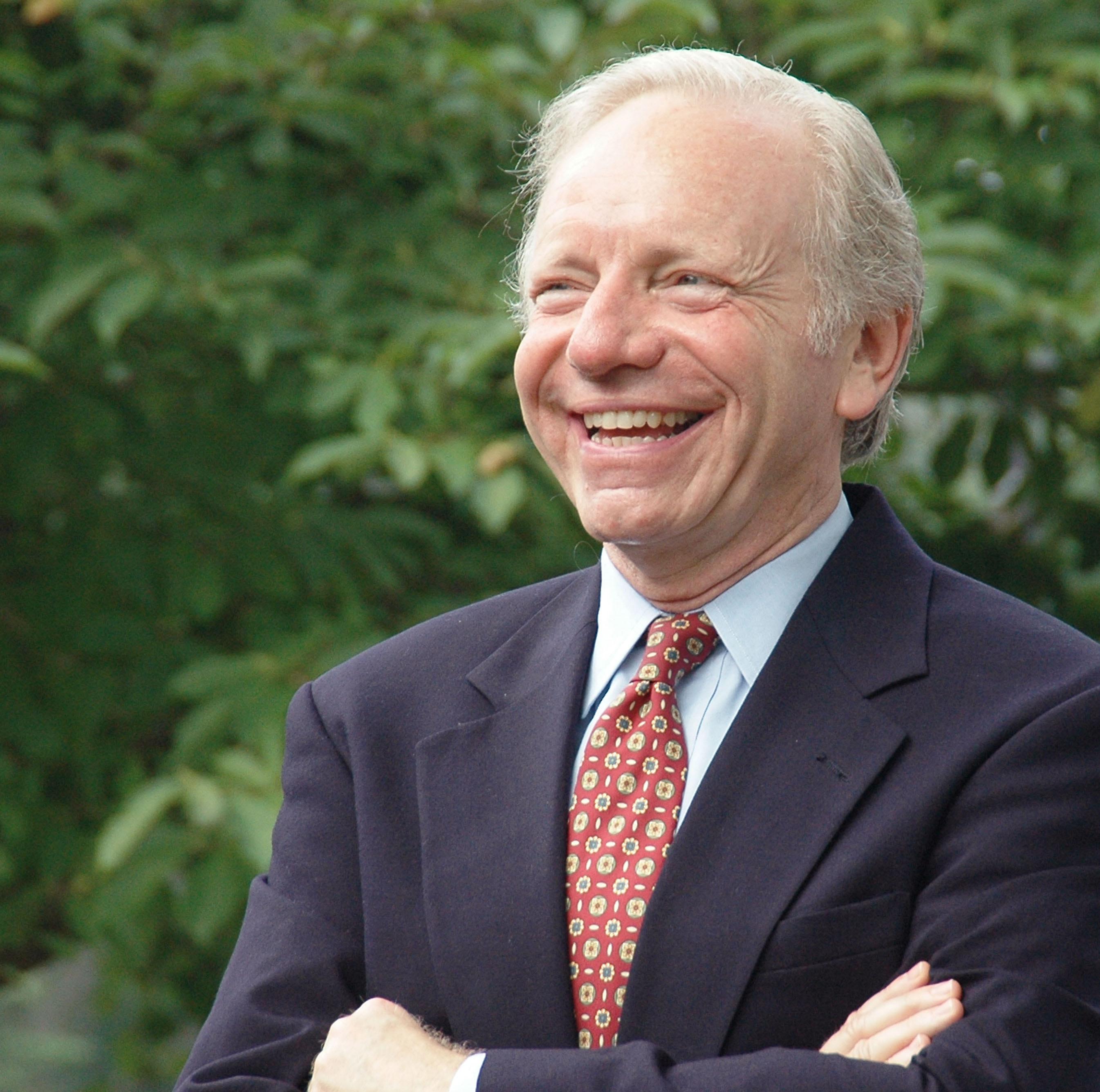
The Senator Who Loved Shabbat
Former vice presidential nominee Joe Lieberman was a proud Jew

Let’s Passover: A brief planning guide and the unspoken questions on everyone’s minds
BS”D
Tradition, Inspiration and Celebration · April 2024 - Nissan 5784 · Published by Chabad Tucson

EXECUTIVE DIRECTOR
Rabbi Yossie Shemtov
REBBETZIN
Chanie Shemtov
OUTREACH DIRECTOR
Rabbi Yehuda Ceitlin
PROGRAM DIRECTOR
Feigie Ceitlin
Affiliates: Congregation Young Israel, Chabad at the University of Arizona, Chabad on River, Chabad of Oro Valley, Chabad of Sierra Vista, Chabad of Vail and Lamplighter Chabad Day School of Tucson

EDITOR Rabbi Yehuda Ceitlin
Shurpin, Dr. Tevi Troy.
EDITORIAL INQUIRIES OR ADVERTISING
Phone: 520-881-7956
Email: info@ChabadTucson.com
Keeping Jewish is
Chabad Tucson does not endorse the people, establishments, products or services reported about or advertised in Keeping Jewish unless specifically noted. The acceptance of advertising in Keeping Jewish does not constitute a recommendation, approval, or other representation of the quality of products or services, or the credibility of any claims made by advertisers, including, but not limited to, the kashrus of advertised food products. The use of any products or services advertised in Keeping Jewish is solely at the user’s risk and Chabad Tucson accepts no responsibility or liability in connection therewith.
Note: “G-d” and “L-rd” are written with a hyphen instead of an “o .”This is one way we accord reverence to the sacred divine name. This also reminds us that, even as we seek G-d, He transcends any human effort to describe His reality.
Bring Them Home
How faith played a role in freeing over 100 people
Imagine more than 100 Jewish people being held hostage by radical Islamists. Imagine they are being tortured and beaten. Names such as Hamaas and Bibi are part of the story. U.S. authorities and Arab countries are heavily involved in the negotiations, with the world watching closely what transpires.
You don’t need to imagine this - it is what is happening in Gaza in 2024. But this exact scenario actually happened in Washington, DC, in March 1977.
That hostage crisis started when a group of gunmen armed with rifles and machetes seized the office building of the Jewish organization B’nai B’rith on Rhode Island Avenue, as well as a government building and a mosque.
Leading the assault was Hamaas Abdul Khaalis, an African American man born in Indiana who had broken ranks with the Nation of Islam movement to create a competing violent group following the Hanafi school of Islam.
Khaalis’ center had been attacked four years earlier by Nation of Islam zealots who murdered his wife Bibi Khaalis and drowned two of their children. Hamaas Khaalis demanded they be brought to him so that he could exact justice. He also wanted a movie premiere about the Prophet Muhammad to be canceled.
The standoff, not far from the White House, lasted for a grueling 23 hours, bringing the nation’s capital to a halt. It ended with Khaalis and his men turning themselves in without battle to face a lifetime in prison.
In a public talk at the time, the Rebbe— Rabbi Menachem M. Schneerson, of righteous memory—marveled at how what was described as the most dramatic hostage
By Rabbi Yehuda Ceitlin

crisis in U.S. history ended with less bloodshed than anyone could have hoped at the time.
He said it was a miracle from Heaven that more (than three) people hadn’t been killed in such a hostile showdown—and that the crisis ended without any of the terrorists’ demands being met. “It has no explanation according to the laws of nature,” the Rebbe commented.
The Rebbe went on to highlight a turning point in the story. The Muslim ambassadors of Iran, Egypt, and Pakistan met with Khaalis, holding the book of the Koran and reading him passages from it.
“The way they influenced the captors to free the Jewish hostages was by stimulating in them their faith in the Creator of the universe,” the Rebbe said. “We see from here the wonderful power of faith that can transfigure a person from one extreme to another.”
Faith isn’t just an exercise of the mind.
It’s meant to influence positive action and alter a person’s behavior “so that it should be in line with G-d,” the Rebbe added. When you internalize faith, you can change drastically for the better.
One way that faith is internalized occurs during Passover. Throughout the eight-day holiday (this year, Monday night, April 22), Jews avoid eating bread and other leavened goods, instead eating the humble Matzah cracker, which the Jewish people ate during their Exodus from slavery in Egypt.
Kabbalah teaches that Matzah is the “bread of faith” (Zohar II, p. 183b). The Jewish People took a tremendous leap of faith when they left Egypt, following Moses into the desert. They were called “believers and children of believers,” yet their faith was only enhanced by eating the Matzah. Doing so made their faith an all-encompassing experience, just as food provides nutrition to the entire body.
As we sit around the Seder, we will eat the Bread of Faith and internalize the importance of strengthening and maintaining our faith in G-d despite the challenges we face. We will also be praying for the more than 100 hostages still being held by Hamas in Gaza.
It is incumbent on people of all faiths to call for their immediate release and the surrender of the terrorists, paving the way for a cessation of hostilities and the end to bloodshed—for which we all pray.
Back then, faith saved us from the evil plans of Hamaas. Today, our faith will help protect us from the evil agenda of the murderous Hamas regime and its allies.
- Rabbi Yehuda Ceitlin is the Outreach Director of Chabad Tucson, the Jewish network of Southern Arizona
| April 2024 | Keeping Jewish
The Jewish outreach and education network of Southern Arizona 2443 E 4th Street, Tucson, AZ
85719
COPY EDITOR
WRITERS
Suzanne Cummins CONTRIBUTING
Feigie Ceitlin, Avi Erbst, Dovid Margolin, Chana Mizrahi, MenacheEli Rubin, Mordechai Schmutter, Rabbi Yehuda
COVER PHOTO Peter Casolino/Alamy SPECIAL THANKS Chabad.org
published in print periodically by Chabad
and is distributed free in
and around Southern
Tucson
Tucson
Arizona
2 OPINION
Growth for Tucson’s Kosher Scene
Over the past five years, Tucson’s kosher food scene has significantly transformed. This change has been primarily driven by the influx of Jewish families into the community, which has created a burgeoning demand for kosher products. This increased demand has empowered the Jewish community to collaborate effectively with suppliers and grocery stores locally and out of state, thereby broadening the availability of kosher options for frozen, packaged, and prepared foods.
Local grocery stores like Safeway, Albertsons, Fry’s and Bashas’ have generally carried a limited range of kosher products, often confined to small sections with basic items like grape juice, jars of gefilte fish, and an endless supply of Shabbos candles.
However, an increasing number of stores have decided to expand their kosher options.
One of the more popular destinations for kosher grocery items is the Safeway on Swan and Sunrise (4752 E Sunrise Drive) by the Catalina Foothills. They have converted a portion of the kosher section to include a refrigerator full of perishables such as assorted kosher deli meats, cheeses, salads, and dips. It’s nice to be able to run to the store and pick up a package of hot dogs for a Sunday BBQ or deli meat for sandwiches. Their Passover section is filled with sauces and spices, candies and confections, snacks and treats for all ages. They even have Kosher for Pesach Heinz Ketchup!
Al Basha at 4145 E Grant Road, a locally owned grocery store catering to the Muslim community, decided to fill the Jewish community’s void and carry kosher products. In addition to deli meats, they have a variety of Middle Eastern frozen goods such as malawach and jachnun and an assortment of ready-to-bake burekas. Trader Joe’s is often the Tucson “go-to” for
By Avi Erbst

kosher meat, chicken, and turkey. Usually, you can find ground beef, stew meat, and various cuts of chicken, including cutlets and chicken legs, as well as ground turkey and half turkey breasts. Around Rosh Hashanah and throughout the summer, they also carry delicious thick-cut steaks and brisket. They also sell whole kosher turkeys for Thanksgiving.
We appreciate and are grateful for the local establishments, but we have even more than that now.
When we need more varied kosher products, we have established relationships with Western Kosher, the largest grocery store in Los Angeles, and KC Kosher Co-op, a wholesaler based out of Kansas City. Western Kosher delivers to Tucson on the second Thursday of the month to a central location in town (download their mobile app to order). The Kosher Co-op delivers quarterly, and items are ordered in bulk,
making prices very competitive (visit kckoshercoop.com).
As the demand for groceries has increased, so has the demand for fresh food. At least 3-4 times a month we have the Kosher Pizza Cart making fresh, hot pizza for the community. Under the supervision of Rabbi Yossie Shemtov of Chabad Tucson, the pizza cart can be found at community events or private parties. No matter what event the cart is in operation for, there is always availability to buy pies if you don’t feel like cooking.
We have recently benefited from Mae’s Kosher Kitchen, a collaborative effort of Handmaker, a local non-profit retirement community, and Chabad Tucson to offer take-out options for those looking for an old-fashioned Reuben, chicken wraps, burgers, deli sandwiches, soups and sides (to order: tinyurl.com/maeskosherkitchen).
Do you feel like having a cool treat as the summer comes around? Look no further than Rita’s Italian Ice & Frozen Custard at 4210 N 1st Avenue, which recently received kosher certification. You can always count on a longtime local institution like Nadines Bakery at 4553 E Broadway Blvd. for a fresh loaf of rye bread, a pound of Shabbos cookies, or a classic strip of apple strudel.
The past five years have marked significant growth and change in Tucson’s kosher food market. This trend is a testament to the power of community demand and collaboration, and it has enriched not just the Jewish community but the entire Tucson area.
--Avi Erbst is a New York transplant who is a broker at Cordova Realty in Tucson, Arizona. He operates the kosher pizza truck in town (contact 646-523-5416 or kosherpizzaaz@gmail.com)
Keeping Jewish | April 2024 |
NEWS
3
Safeway on Swan and Sunrise in Tucson which boasts a large Kosher For Passover display

If there is one word with which Joe Lieberman’s name is most associated, it is the Jewish day of rest: Shabbat.
Lieberman, who faithfully observed Shabbat throughout his high‑profile political career, passed away on March 27. He served four terms as U.S. senator from Connecticut, and in 2000 was nominated for vice president on the Democratic Party ticket, becoming the first Jewish candidate to represent a national party platform.
In the critical fall, weeks before the election, Lieberman let it be known that on Rosh Hashanah, Yom Kippur, Sukkot, and Simchat Torah, he would not be on the campaign trail but in the synagogue.
In 2011, towards the end of his fourth term in the Senate, Lieberman published his seventh book, The Gift of Rest: Rediscovering the Beauty of the Sabbath.
The Senator Who Loved Shabbat
Former vice presidential nominee
Joe Lieberman was a proud Jew
By Eli Rubin and Dovid Margolin - Chabad.org
Shabbat observance and synagogue attendance were only the most public dimensions of his commitment to Jewish life and practice. Lieberman kept kosher, laid tefillin every weekday morning, prayed three times daily, and regularly studied the weekly Torah portion.
Once, Lieberman and a Jewish congressman found themselves having lunch on Air Force One with President Bill Clinton. The congressman joked that there were now two sandwiches for him because Joe wouldn’t touch his. “What do you mean?” Clinton shot back, “We have special sandwiches for Joe!”
An Early Stand for Shabbat
Joseph Isadore (Yosef Yisrael) Lieberman was born on February 24, 1942, and grew up in an observant Jewish home in
Stamford, Connecticut. His parents, Henry (Chanan) and Marcia (Masha), were both born in the United States to Jewish parents who had emigrated from Poland and Austria in the early 1900s.
When Joe was growing up in the 1940s and ‘50s, the Liebermans were perhaps the only Shabbat‑observant young family in the area. On Shabbat afternoons in the summer, when most neighborhood children would go down to the beach to swim, his mother would prepare games and refreshments in her home and invite the Jewish kids over so that they, too, could keep Shabbat.
In a moving eulogy, Lieberman’s daughter, Hani Lowenstein, spoke directly to her father, saying: “Your mother and father, and your grandmothers were known, not because they were rich or fancy or famous people; they were known because of their
many acts of chessed [kindness], their work with the mikvah … They were known because of their quiet help to individuals who needed it, and because of their wise counsel.”
The environment rubbed off on Joe. In his senior year of high school, he was elected prom king, but because the prom was held on Shabbat, he chose to forgo the honor and stick to his religious commitments instead.
His maternal grandmother, Minnie (“Maintza” in Yiddish) Manger, was an important presence in young Joe’s early life. She had carried the legacy of traditional Jewish life across the ocean from Europe, and he described her as “the religious foundation of our home.” In Poland, she had been persecuted for her religion, but in America, she was respected for her observance. Thus, besides being a proud Jew, she became a proud American, too.
carry and
law
After Leader Lieberman Attorney Lieberman 1988 his oath
“I told be a source general.”
“Thank “I’m opportunity whatever Lieberman
| April 2024 | Keeping Jewish
When grandson and
W
conveyed of would children
A After
briefly to The Schneerson—of him “a prophet of peace For public was he of In movement, each
of
4
TRIBUTE
On his way to Washington, D.C. in 1988 as a newly elected Senator, Lieberman stopped in Brooklyn, NY, to seek the Rebbe’s blessing (Photo: JEM)
When she passed away in 1967, her grandson decided that he would emulate and perpetuate her legacy in his own life. With her very last words, he recalled, she conveyed her love for Shabbat. “If I let go of the link in the chain,” he reasoned, “it would be broken and lost to me and my children after me.”
APath of Public Service
After earning a law degree and working briefly as a lawyer, Lieberman was elected to the Connecticut Senate in 1970.
The Rebbe—Rabbi Menachem M. Schneerson—of righteous memory sent him a letter which Lieberman described as “a brief dissertation” on the appeal of the prophet Jeremiah (29:7) to “seek the peace of the city” wherein you dwell “for in its peace you shall have peace.”
For a young man “beginning a career of public service,” Lieberman later recalled, “it was a very, very, powerful message,” which he saw as expressing the fundamental ethos of Chabad as a movement.
In Lieberman’s words: “It is a Jewish movement, but it is a movement that gives each of its inheritors a responsibility to carry the underlying principles and ethics, and actions of Torah out to the world—acts of kindness, acts of justice, and the rule of law.”
After serving three terms as Majority Leader in the Connecticut Senate, Lieberman held the office of Connecticut Attorney General from 1983 to 1989. Lieberman was elected to the Senate in 1988 and visited the Rebbe in Brooklyn on his way to Washington, D.C., to take the oath of office.
“I saw your picture in the paper,” the Rebbe told him. “May G‑d Almighty bless you to be successful in your new position and to be a source of pride for the Jewish people in general.”
“Thank you, Rebbe,” Lieberman replied. “I’m going to try my best … It’s a great opportunity and a great responsibility to do whatever I can to sanctify G‑d’s name.”
Lieberman had a personal connection
TRIBUTE
with the Rebbe, corresponding with him and interacting with him in person. “The Rebbe,” he once said, “was a leader with a mission to spiritualize the world, to convince people, through acts of kindness and goodness, to bring the world as close as we possibly could, in our time, to perfection—and to do it one by one, mitzvah by mitzvah … until that time when the world is filled with the knowledge of the Lord.”
Faith in the Heart of Politics
In Washington, Lieberman stood out for his religious convictions and for the integrity that was part and parcel of these beliefs. The cot he kept in his Senate office in case he’d need to sleep there overnight if a Friday vote went late became legendary.
Lieberman’s Shabbat observance came onto the national stage in 2000, when by‑ then‑Vice President Al Gore chose him as his running mate. In his book, Lieberman recalls one particularly memorable Shabbat dinner that he and his wife, Hadassah, spent with the Gores during the hotly contested election recount.
“When we were done and it was time to leave, Al asked if we were going to walk home,” Lieberman wrote. “We said yes, and he and Tipper said they would accompany us. We resisted; but they persisted; and so on that beautiful December night, the four of us—with the Secret Service discreetly walking behind and security cars ahead and behind—walked … to our house” a little more than a mile away.
And then there was prayer. In the 1990s, Lieberman recalled in another anecdote shared in The Gift of Rest, he and the late Senator John McCain of Arizona were on a plane headed to Bosnia to visit U.S. troops there. As the morning sunlight dawned, Lieberman arose and donned tallit and tefillin to recite morning prayers.
“I noticed John open his eyes for a moment and look at me, then close them again,” Lieberman wrote. “Then, doing a double take, his eyes opened wide.”
“Where am I? What is going on!” the Arizona Republican blurted out.


“Johnny,” Lieberman replied, “I’m just saying my morning prayers,” before briefly explaining what they were.
“Oh good,” McCain cried with relief, “for a moment there, Joey, I thought I’d died and gone to heaven.”
Rabbi Yisrael Deren, a longtime family friend who established Chabad of Stamford, said: “He impacted a generation of young American Jews. Whenever he spoke in schools or to groups, he’d tell them not only is there no contradiction between Torah and mitzvot and public life, but that such commitment was an advantage, something Americans respected you for.”

Keeping Jewish | April 2024 |
5
Senator Joe Lieberman and his wife Hadassah (Photo: Shirley Li/Medill)
General David Petraeus (second from left) greets U.S. Senators Lindsey Graham, John McCain, and Joe Lieberman in Kabul, Afghanistan (Photo: U.S. Air Force)
Senator Joe Lieberman’s Book.
Passover A to Z Z
A quick overview of the 8-day holiday of freedom
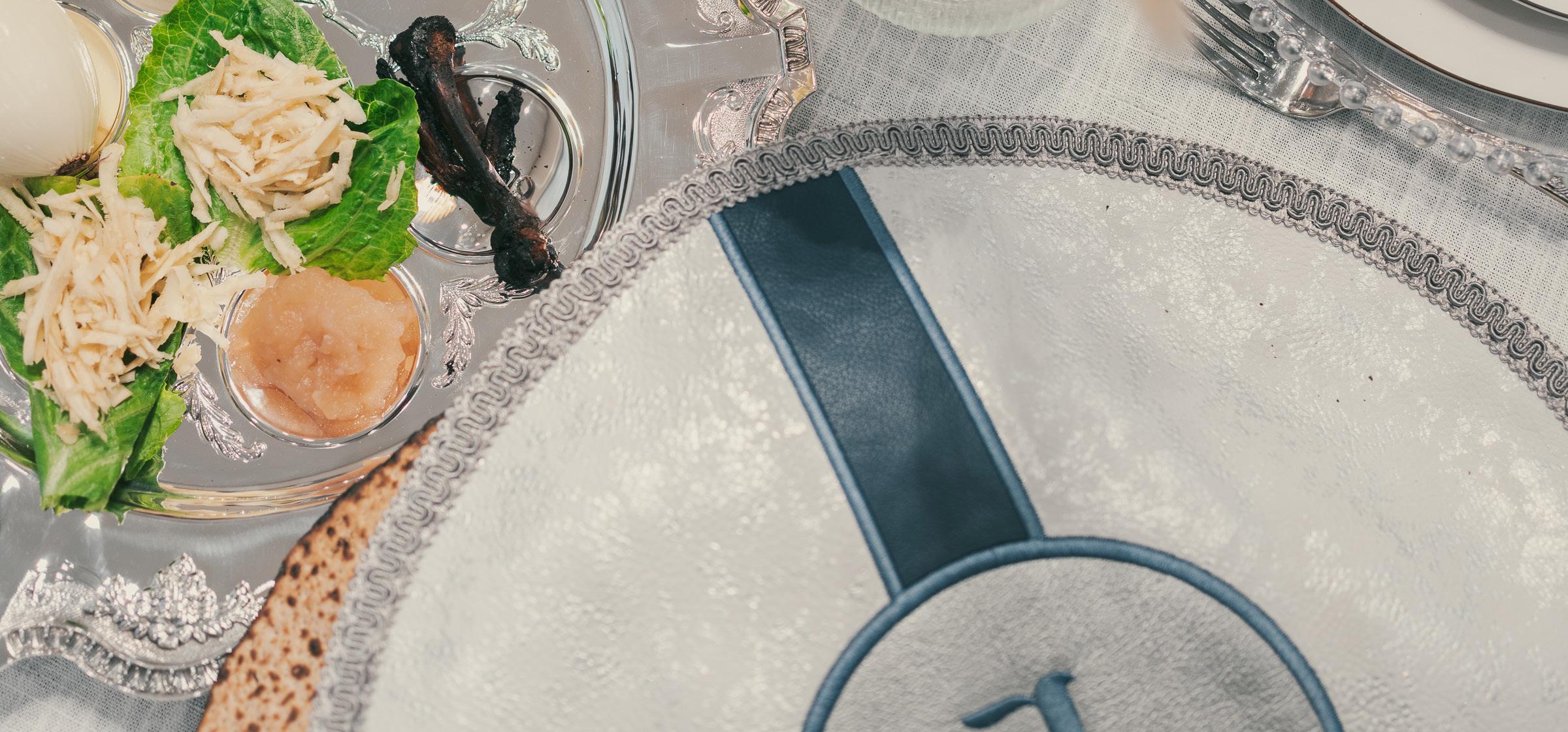
The eight-day Jewish holiday of Passover (Pesach) is celebrated in the early spring, from the 15th through the 22nd of the Hebrew month of Nissan, April 22-30, 2024. It commemorates the emancipation of the Israelites from slavery in ancient Egypt.
During the first two nights, we have Seders, during which we eat matzah and bitter herbs, drink four cups of wine, and retell the Exodus story. We commemorate the Israelites’ suffering in Egypt, Moses leading us to freedom, and G-d establishing a covenant at Mount Sinai.
Passover is the first of the annual festivals that G-d gave the Jewish people. The others are Shavuot, Rosh Hashanah, Yom Kippur, and Sukkot. It is unique in that G-d commanded its observance even before our people had left Egypt. Even while we were technically under Egyptian bondage, G-d instructed us to celebrate Passover every year, remembering His kindness in freeing us from Egypt to become His ambassadors of goodness and morality on earth.
But Passover is not an “easy” holiday - it
takes a lot of planning and effort to prepare for and execute this beautiful observance. Below is a planning guide to follow to both get ready and be compliant.
The weeks before Passover:
Begin the housecleaning process. Methodically inspect and rid every part of the home of any traces of chametz. We need to be on the lookout for crumbs of all sorts, hidden stashes of crunchy snacks, fermented drinks (nearly all are made with grain), etc. Some make a list of all the rooms in our house and cross off each one as we complete it.
Arrange for the selling of chametz. You don’t need eBay or Shopify for this. You can fill out a form and bring it to your Rabbi, delegating to him the task of selling your chametz to a gentile. (It can be done online at ChabadTucson.com/chametz).
Buying Passover essentials like matzah and wine needs to be done in advance and stored in a place that is absolutely safe from contact with chametz.
If you are not making a Seder at home,
contact your nearest Chabad center in Southern Arizona (or anywhere in the world!) to join their community Seders.
Afew days before Passover:
Begin work on making the kitchen “Kosher for Passover.” Put away all utensils that have been used year-round, and lock or seal those cabinets, along with non-kosherfor-Passover food. Once the kitchen is completely clean, do the special procedure to kosher both kitchen and appliances for Passover.
(If you are not ready to start eating only kosher-for-Passover food yet, you can buy ready-prepared food and eat it outside of the house or in a place that will be “sold” for the duration of Passover.)
Take stock of the Passover inventory. Take out any special-for-Passover dishes or silver from where they are stored. Make sure there are enough Haggadahs for the Seder.
Do the Passover shopping. Buy the Seder ingredients, plus general food for Passover. Store these in the newly cleaned
refrigerator and cabinets—empty, of course, of any non-Passover food. It is now appropriate to begin cooking for the holiday in the kosher-for-Passover kitchen.
Make sure that holiday clothes and shoes are ready, ironed and polished. Many of us treat ourselves to something new—an outfit, shoes, or even just a tie or shawl.
Sunday,April 21, 2024 (2 days before Passover):
Do the ritual search for chametz. Take a candle, a spoon and a feather, and search the house for any remaining or forgotten chametz.
Monday,April 22:
Burn any leftover chametz that is not being sold, including anything that was found Sunday night at the Search for the Chametz. Burn the chametz by 11:06 AM in Tucson and recite the “nullification statement,” renouncing all ownership of any chametz that may remain in your possession.
Prepare for the Seder. Ready the items for
| April 2024 | Keeping Jewish
HOLIDAYS 101 6
the Seder plate. Light holiday candles at 6:41 PM.
Evening holiday services include the special addition of the Hallel prayer.
At the Passover table, three matzahs are placed on the Seder plate, along with five other symbolic foods: bitter herbs (romaine lettuce and/or horseradish, which recall the bitterness of slavery), charoset (a paste that reminds us of the mortar used by the slaves on Egyptian building projects), as well as an egg and roasted shank/chicken neck (each of which symbolizes one of the sacrificial animals our ancestors would have enjoyed during this meal in Temple times).
Hold the first Passover Seder. On this night, the Israelites, led by Moses, left Egyptian slavery. They ate the Passover sacrifice, roasted goat or lamb, along with matzah and bitter herbs in their homes. G-d brought the 10th plague at midnight, prompting Pharaoh to release the Israelites.
the Exodus, and enjoy the matzah, wine, and bitter herbs. Make sure to eat the Afikoman by midnight.
Tuesday,April 23:
Passover morning services include a special prayer for dew and Torah reading.
Light candles from a pre-existing flame (as it is forbidden to create a new flame on Yom Tov) after nightfall at 7:38 PM.
During the Maariv evening service, begin Sefirat Haomer, the nightly counting of the days between the holidays of Passover and Shavuot, when the Torah was given on Mount Sinai. A special blessing is said each night.
Celebrate the second Seder, just as the previous night. The only exception is that there’s no midnight deadline to eat the Afikoman; it can go on until morning.
Wednesday,April 24:
Tonight begins the four “intermediate days” of Passover (Chol Hamoed Pesach). Celebrate these days with matzah, kosherfor-Passover cooking, family trips (in the newly cleaned car), and more retelling of the Exodus story.
It’s still Passover, so we don’t eat, own, or derive enjoyment from chametz but most activities prohibited the first and last two days are permitted. We also add special passages to our prayers: Hallel, Yaaleh Veyavo, and Musaf.
Sunday,April 28:
Tonight begins the final two festival days of Passover (Shvi’i shel Pesach and Acharon shel Pesach). Light candles at 6:45 PM and enjoy festive meals Sunday night, Monday afternoon, Monday evening and Tuesday afternoon.
Some have the custom of staying awake Sunday night (the night of the Splitting of the Sea) and studying Torah through the night.
Yizkor, the memorial prayer for departed parents, is recited following the reading of the Torah during the morning prayer service. This year’s service will include those murdered on October 7 in Israel.
As the day wanes, there’s a Chassidic custom of holding “Moshiach’s Meal” — a light feast in the final hours of Passover in honor of the Redemption. We’ve spent eight days celebrating the exodus from Egypt. Now, as we leave Passover, we pray for the exodus from our present exile and a brighter tomorrow.
At 7:44 PM, the Passover holiday comes to an end. Make Havdalah over your last cup of kosher-for-Passover wine. Put away the Passover dishes, Haggadahs, and all other holiday items, locking them away until next year.
Then, you can once again enjoy chametz food and drinks, and feast on pizza, bread, beer — anything kosher. But as you do, don’t forget the eight days of freedom you’ve just experienced, and remember


Monthly at Handmaker beginning at 11:30am
Friday, May 10, 2024 - The Importance of Fall Prevention, with Elizabeth Reeves from PCOA Friday, June 14, 2024 -Learn Tools for Protecting Yourself from Cyber-Stalkers, with Levia Nahary, Cyber Security Educator.
This program was funded by a grant from the Jewish Community Foundation of Southern Arizona.

now holiday for HOLIDAYS 101
Shabbat Lunch & Learn Lunch is on us each month at Join us for a delicious lunch, learn about a variety of topics related to aging, and take home a Shabbat dinner! There is no cost to attend, but reservations are required. For more information, to RSVP, or for info on assistance with transportation, contact Nanci Levy at nlevy@handmaker.org or 520-322-3632.
Moments in Motion
From walks to wraps, celebrating tradition and togetherness

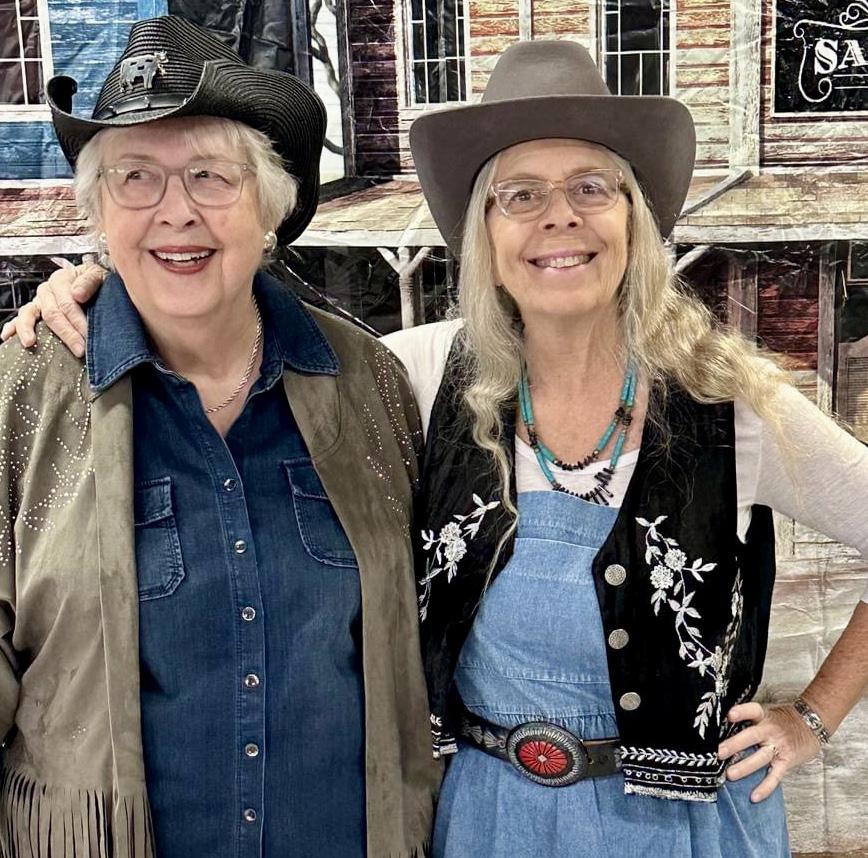

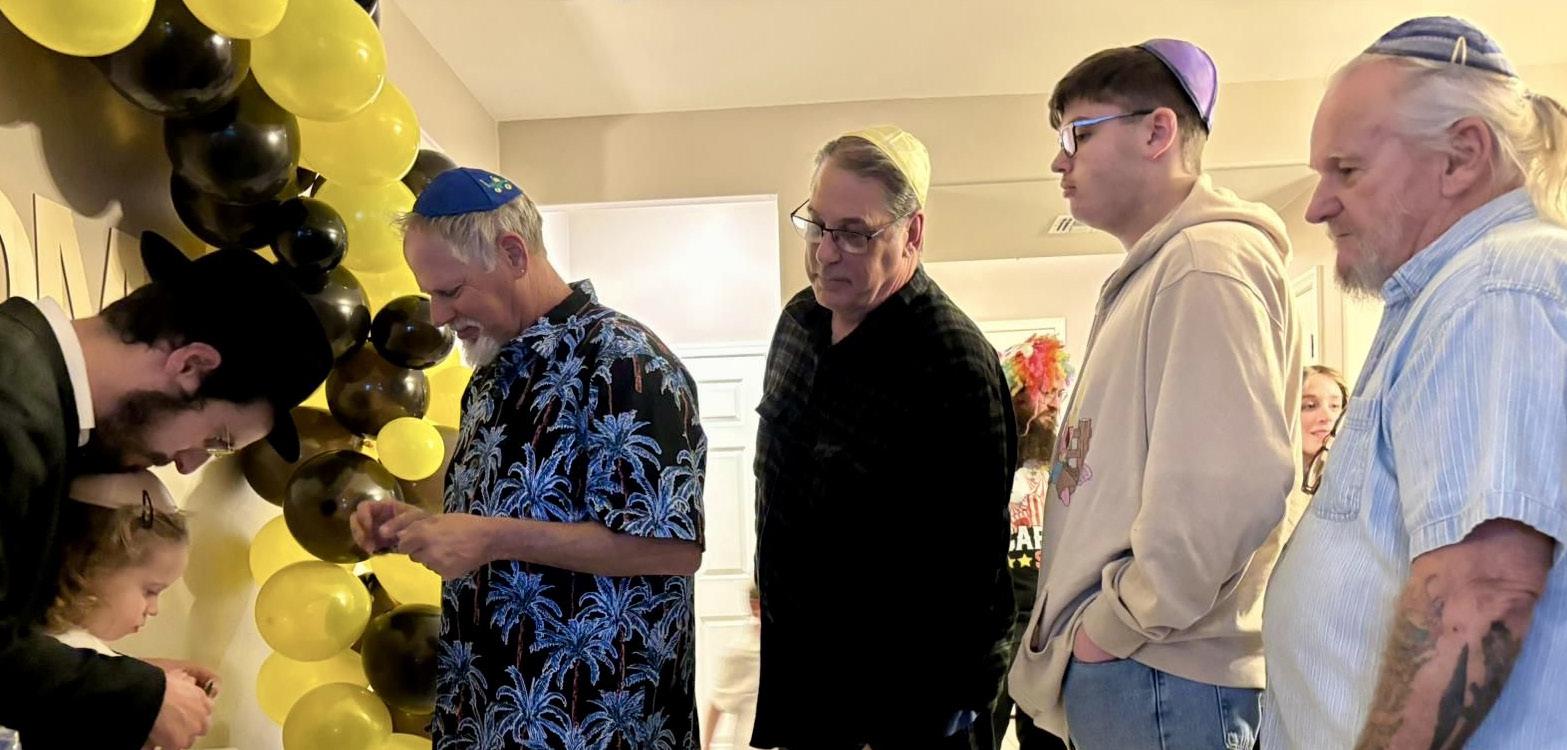
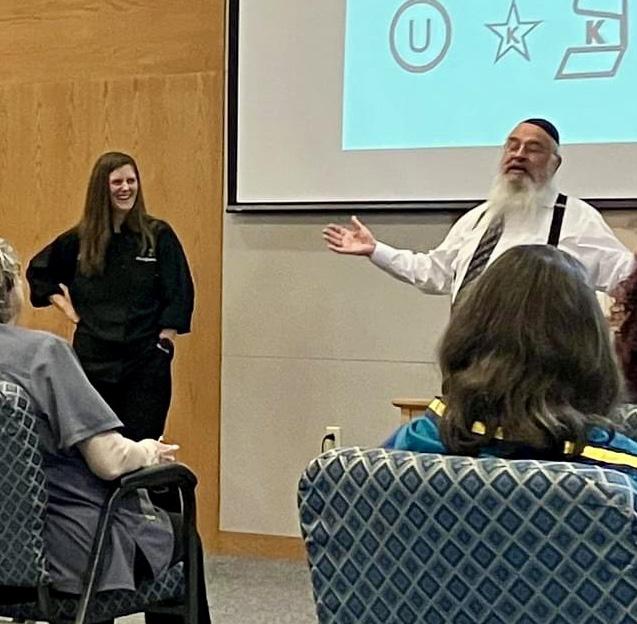

| April 2024 | Keeping Jewish
LOCAL 8
Girls who walk. Sarah Shanowitz of Chabad at the University of Arizona hosts a Sunday morning meetup where students bond during a leisurely walk.
Look up. The Shul of Tucson (Young Israel) was decked out as Umbrella Street in Jerusalem for the Israeli-themed Purim in the Shuk celebration.
Young bakers. Students of the toddler class at Lamplighter Chabad Day School of Tucson try their hand at baking Matzahs for Passover.
Gentleman’s cut. A 3-year-old boy waits for his hair to be snipped as part of the upshernish ceremony at the Chabad Jewish Center of Vail Kosher talk. Rabbi Yossie Shemtov of Chabad Tucson and Executive Chef Claire Ferguson of the Handmaker retirement community led a staff training workshop in preparation for Passover.
Jewish saloon. Renee Grills (left) and Mina Rose dressed in custom at the Purim in the Wildwest celebration held at Chabad of Oro Valley.
Citrus Chicken for Passover
Passover is a holiday that demands time and dedication, from meticulous cleaning to elaborate cooking and joyful celebration. Amidst the hustle, there’s one dish that stands out for its simplicity yet delightful flavor. It’s a favorite among those who opt for a catered meal from our Chabad PopUp kitchen for Passover.
Ingredients:
4 pieces chicken
2–3 varieties of oranges (naval, Cara Cara, blood oranges)
2 small onions
Kosher salt
Directions:
Thinly slice an onion and spread it on the bottom of the pan.
Place the chicken pieces on top.
Slice one or two oranges (a variety adds depth of flavor).
By Feigie Ceitlin

Squeeze the juice over the chicken lightly. Then slice the oranges into rounds.
Arrange the orange slices and some more onion slices on top of the chicken.
Sprinkle with kosher salt.
Cover the pan and bake at 350°F for about an hour and a half.

For the last 10 minutes, remove the cover to allow the chicken to brown slightly.
*
The blessing: Shehakol
Baruch atah A-donay, Elo-heinu Melech
Ha’Olam shehakol nihiyah bed’varo.
Blessed are You, L-rd our G-d, King of the universe, by Whose word all things came to be.
B’tayavon!
— Rebbetzin Feigie Ceitlin is the program director of Chabad Tucson and head of school of Lamplighter Chabad Day School.

Keeping Jewish | April 2024 | 9 KOSHER
Photo: @limor_laniado_tiroche
Why is this Seder Different?
White House practice shows that American Jews belong White House shows that American Jews
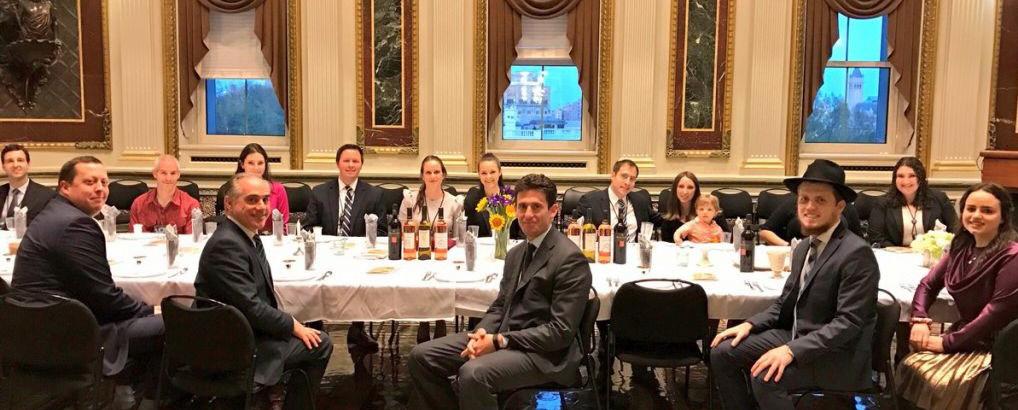 By Dr. Tevi Troy
By Dr. Tevi Troy
While America has never had a Jewish president, it has begun a relatively new tradition demonstrating Passover’s deep impact on the collective American consciousness.
Beginning in 2009, President Barack Obama hosted seders in the White House, becoming the first president to attend one there. This White House Seder is the latest in a series of escalating steps taken by presidents of both parties to appeal to Jewish voters.
President George W. Bush, for example, initiated the tradition of hosting Chanukah parties in the White House, while President Jimmy Carter was the first president to allow a menorah lighting outside the White House (today, annually organized by Chabad).
Donald Trump followed Obama and supported a Seder in the White House run by some of his Jewish staffers and representatives of Chabad. However, neither Trump nor his family members, some of whom are Jewish, attended.
When Joe Biden became president, his Covid-careful administration chose to have an online “People’s Seder.” Because it was online, the People’s Seder took place before
Passover, so it would not interfere with the actual Seder ritual.
The Seder is one of the most recognized Jewish rituals, and one can hardly fault the Obama and Trump administrations for trying to promote better relations with the Jewish community by inviting the ritual into the White House. Yet there are simple reasons why hosting a Seder is far more challenging than throwing a Chanukah which is fundamental celebratory and not ritually intensive.
A Seder, in contrast, is an explicitly religious event and is fraught with pitfalls that can diminish the goodwill these types of events are supposed to engender. Different observances and different Jewish denominations create significant logistical problems in having one type of seder “speak” for all Jews.
For this reason, the streaming “Seder” is actually a helpful improvement that can potentially bring different streams of Jews together (from both political parties) without emphasizing their denominational differences.
Navigation of religious and political differences aside, Passover is an important Jewish holiday, and politicians seeking to
reach out to the Jewish community are welcome. Political leaders making such efforts to reach out reflect a meaningful improvement over much of Jewish history in which Jews hoped that their host governments would not kick them out or, worse, kill them.
Even as we celebrate this supportive government, we should also recognize that there are limits to making our holidays part of secular politics. A search by politicians for Jewish community events to latch onto for political purposes runs the risk of mixing that which is holy with that which is common. Sticking with Chanukah parties and virtual Seders seems like a good place to settle and a worthy development to celebrate.
Of course, even switching to a virtual Seder will not avoid controversy. For example, a conservative blogger did not like the fact that a Jewish critic of Israel was invited to the 2021 Seder. Yet wise and careful guest selection can alleviate some of the potential pitfalls.
In 2022, Vice President Kamala Harris and First Gentleman Doug Emhoff, who is Jewish, celebrated a Seder at the Vice President’s official residence for the first time. Guests like historian and diplomat
Deborah Lipstadt, Yeshiva University President Rabbi Dr. Ari Berman, and actress Mayim Bialik participated and brought meaningful religious content to the discussion. In addition, the White House was careful to make sure that the Orthodox, Conservative, and Reform movements were all represented.
Vice President Harris even displayed a bottle of wine from a vineyard in Judea and Samaria at the virtual Seder. (She also said, “Next Year in Jerusalem,” which was a pleasant surprise.). Biden released a statement saying, “The spirit of this holiday continues to teach us that with faith, the driest desert can be crossed, the mightiest sea can be split, and hope never stops marching towards the Promised Land.”
As a Modern Orthodox Jew and a former White House Jewish liaison, I find the White House Seder tradition meaningful and powerful because it shows that we are welcome and accepted in this great country. May the virtual Seder continue as an American Jewish political tradition.
- Author and historian Tevi Troy is a senior fellow at the Bipartisan Policy Center, a senior scholar at Yeshiva University’s Straus Center, and a former White House aide. This is an excerpt from
| April 2024 | Keeping Jewish
10
The Passover Seder at the White House led by Chabad in April 2017
Pizza in the Park
As an Air National Guard spouse, I travel with my husband one weekend per month to his base. Our civilian friends think this must be like a monthly vacation!
In reality, I’ve traveled sick, days after surgery, with a broken foot, mere days before or after major holidays, back-to-back with other obligatory trips, with only hours in between—and sometimes, it’s not for only the weekend!
We can’t choose the timing, and we face the hardships of having to make Shabbat in an unfamiliar place (I feel compelled to make it as nice as at home since it’s not an occasional thing like a vacation would be).
One year, we had committed to visiting relatives for the last days of Passover (and we were bringing all the food and wine!), but after we made that commitment, we found that starting two days after Passover ended, we were to have six consecutive days of duty on base.
That year, Passover ended on Sunday night. On Monday night, we had to be on our way to the base. Laundry couldn’t be done during the holiday, so we would have almost no clean clothing coming home from our Passover visit. We would have around 20 hours to unpack, wash and dry everything, pack our clothes, and also cook kosher food for the week! But we would
have no time to convert our Passover kitchen back to our year-round kitchen (it can take hours!).
In this case, as in many cases, planning ahead was key. I would have to make and freeze enough Passover food to last for two weeks instead of one, which meant I’d have to kosher my kitchen for Passover much earlier than usual (and I already start early as it is since I run a discount wig company, Mazette Wigs, and many people like to have a new wig in time for Pesach, so I get quite busy!).
In addition to preparing the kitchen and food early, I also prepared a pile of handwritten lists to plan for every waking minute of those 20 hours we were to be home so I could somehow manage everything.
My husband had to go to work in his civilian dental practice the Monday that we were home, (and the practice is always busier after a holiday), so I couldn’t even count on any assistance.
Since we don’t eat much bread or other chametz (leavened goods) during the week anyway, it wasn’t so weird to have Passover food all week at the base, and we bought bread for Shabbat to have in our hotel room.


However, it was very surreal to arrive home a full week after Passover, when everyone else in the Jewish world had quite moved on from their fast of bread and know that our home was still kosher for Passover. All my “Passover only” pots, pans, dishes and utensils had to be put away before I could bring chametz into the house.
It is our habit to pick up pizza on our way home from the base, and that’s the only time we even eat pizza (a special monthly treat). A week before Passover, it can be very normal to see families eating their chametz in a park.
That year, a full week after Passover had ended for the rest of the world, we picked up our pizza as usual and took it to a nearby park to eat (my husband had been made to understand that it would
be dangerous to his health to bring that anywhere near our kitchen!).
We carefully brushed off every crumb and sanitized our hands lest we forget not to wash them in the kitchen when we got home. It was a classic pre-Passover scene— except it was exactly a whole week after Passover!
This was one of many times I’ve thought that military life, especially Jewish military life, is quite weird—though I must admit that I love rising to these challenges, and I wouldn’t have it any other way!
If you’re finding Passover difficult or overwhelming this year, just remember that at least it’s (probably) only eight days! Wishing everyone a happy and kosher holiday.

Keeping Jewish | April 2024 | which the never as fellow scholar om
STORY
11
Chana Mizrahi and her husband
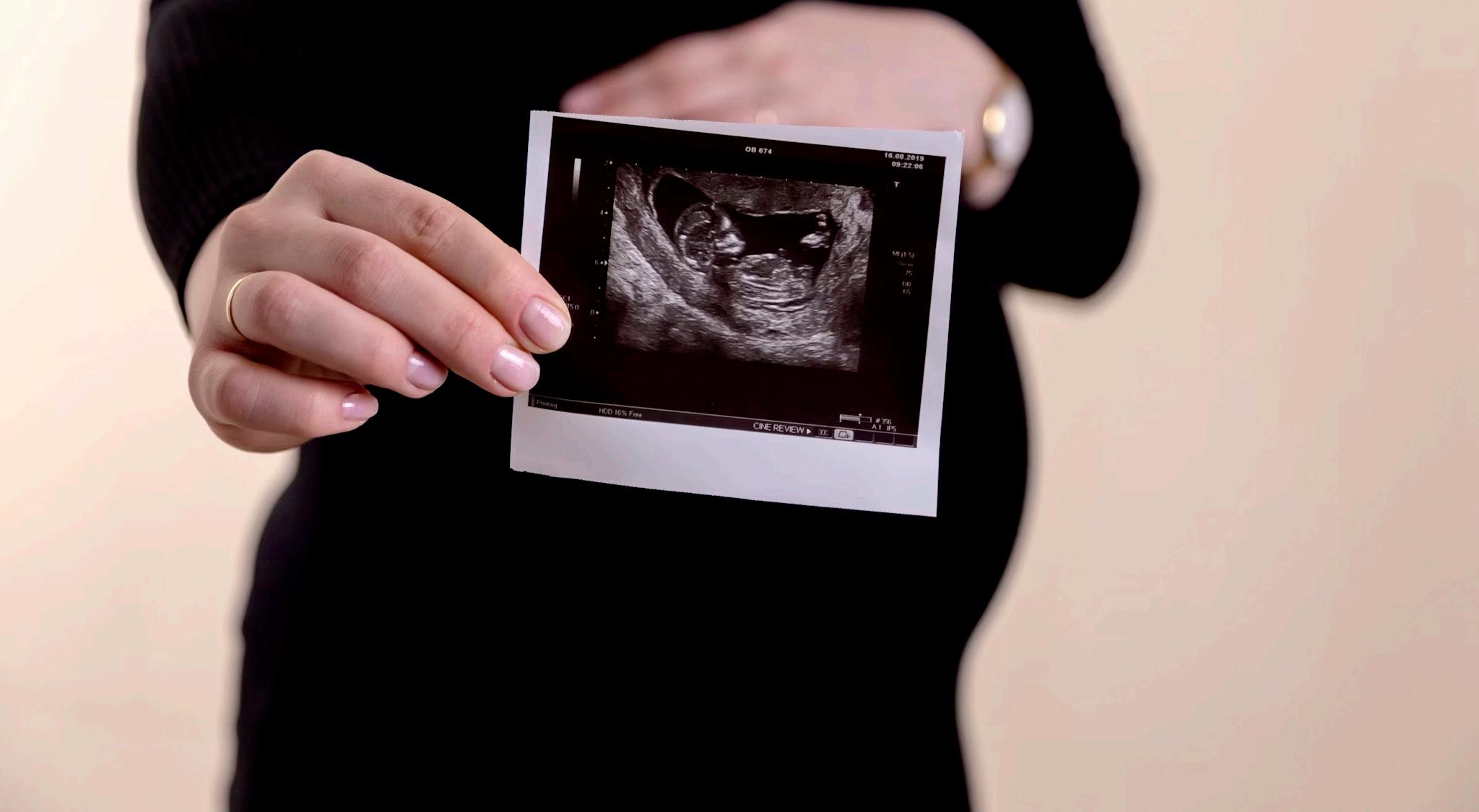
Faith, Life, and Choice
Understanding Judaism’s approach to abortion
By Rabbi Yehuda Shurpin
Note: This short essay is meant purely as an educational overview. Jewish law approaches each case according to its particular circumstances. In any actual case, it is vital that qualified rabbis and medical professionals be consulted.
The question of abortion is perhaps one of the most sensitive and charged topics in the political sphere. As is often the case, Judaism’s view is quite nuanced and does not necessarily fit squarely into either side of the debate. We will try to present a basic overview of the Jewish approach to abortion by presenting the main sources on the subject in both the Hebrew Bible as well as the Oral Torah.
Abortion in the Hebrew Bible
The first reference to abortion is in Genesis when Noah and his descendants are forbidden to murder: “One who sheds the blood of man through man shall his blood be shed, for in the image of G‑d He made man.”1
The sages of the Talmud point out that the phrase “one who sheds the blood of man through man” is more accurately translated as “one who sheds the blood of man within man.” Based on this, Rabbi Ishmael learns that under ordinary circumstances, the killing of a fetus is considered a capital offense for all descendants of Noah, i.e., humankind.2
Read in isolation, one could conclude that abortion is akin to murder. But things are
not so simple. Here is what we read in Exodus:
Should men quarrel and hit a pregnant woman, and she miscarried but there is no fatality, he shall surely be punished when the woman’s husband makes demands of him, and he shall give [restitution] according to the judges’ [orders].3
Since the Torah obligates only monetary compensation but no capital punishment, the Torah seemingly views the fetus as property, not as a human life.
There are various ways of reconciling these verses (see footnote 4). All agree, however, that under ordinary circumstances, abortion is prohibited.
Life But Not Life
Under which circumstances would abortion be permitted? For one, if a pregnant woman’s life is endangered unless the pregnancy is terminated, “her life takes precedence over [the fetus’s] life.” The sages of the Mishnah add, “If, however, the majority of [the fetus] emerged, we may not touch it, for we do not push aside a life in place of another life.”5
Why may the unborn baby be sacrificed to save the mother? Maimonides explains that the fetus has the law of a rodef, one who is pursuing another with intent to kill, whose life may be taken in order to save the would‑be victim. It is thus permitted to abort the fetus, surgically or through
| April 2024 | Keeping Jewish
12
HEALTH
Photo: Volodymyr Hryshchenko/Unsplash
medication since the fetus is seen as an active threat to the mother’s life.6
But why is it the fetus whose life is sacrificed for the mother and not the other way around? Apparently, the unborn child, although a living being, does not yet have a status of personhood equal to its mother. Only once its head has begun to leave the birth canal are the two considered on equal standing.7
To what extent is the fetus considered a danger to the mother? What if the mother is experiencing psychological or emotional suffering? As this is a very sensitive and nuanced area, a qualified rabbi—together with medical experts—must be consulted.
In addition to assessing the danger, the rabbi will take the duration of the pregnancy into consideration. However, abortion is generally forbidden even before the fetus is considered viable (in fact, simply “wasting seed” is in itself considered a serious transgression). Depending on the stage of pregnancy, there is considerable debate as to the exact nature of the prohibition.
For example, some explain that there is a difference between aborting in the first 72 hours (when it can still be classed as preventing conception), the first 40 days8 (before the limbs and organs form), the first three months, and until seven months (when the fetus is considered viable).
In the case of rape, for example, many would permit preventing conception by taking medication within 72 hours of coitus (and some, depending on the circumstances, may permit up to 40 days).9
The Fetus in Judaism
We know that the fetus is not considered as “alive” as someone who has been born. But neither is it simply a mass of flesh without a soul. Indeed, the sages of the Talmud tell us the following:
“A lamp is lit for the unborn child above its head, and with it the child peers and sees from one end of the world to the other. . . . There are no days in which a person
experiences more bliss than during the days in the mother’s womb . . . while there, the child is taught the entire Torah . . . but as soon as he emerges, an angel strikes him on the mouth, causing the child to forget the entire Torah...”10
Although the Talmud is not necessarily referring to the physical fetus, but rather to its soul, this passage lets us know that the fetus is already somewhat linked to its soul.
The JewishApproach toAbortion in Short
Under normal circumstances, it is forbidden to take the life of an unborn child, and it may be akin to murder (depending on the stage of pregnancy and birth, see footnote 11).
As long as the unborn remains a fetus, it does not have a status of personhood equal to its mother and, therefore, may be sacrificed to save the life of the mother.
In any case, where abortion may be necessary, it is of paramount importance to consult halachic and medical experts as soon as possible.
FOOTNOTES:
1. Genesis 9:6.
2. See Talmud, Sanhedrin 57b.
3. Exodus 21:22.
4. For example: (a) The fetus might or might not have been fully viable, and there is no way to know for certain. Thus, this technicality prevents us from holding the assailant liable for capital punishment. (b) The context of this verse is about murder, but in fact there may be a number of other prohibitions that were transgressed. (See Rabbi Avraham Steinberg, “Abortion and Miscarriage,” in Encyclopedia of Jewish Medical Ethics, for a list of the different opinions.)
5. Mishnah, Ohalot 7:6.
6. Mishneh Torah, Hil. Rotzei’ach 1:9; Shulchan Aruch, Choshen Mishpat 425:2.
7. See commentary of Rabbi Akiva Eiger on Mishneh Torah, Hil. Rotzei’ach 1:9
8. It should be noted that, halachically, “40 days” are counted from when the woman is immersed in the mikvah, not from the beginning of the last period, as doctors usually count. Thus, while the doctor may consider the fetus 40 days old, Jewish law would consider it only 26 days old.
9. See Nishmat Avraham, Choshen Mishpat 19:23.
10. Talmud, Niddah 30b.
11. Ending a viable life after 30 days since birth is considered “certain murder.” After 6 months of pregnancy, when the fetus may be viable, it is considered “possible murder,” and it is permitted to abort only when the mother’s life is endangered, as the fetus is classified as a rodef. Between 40 days and 6 months of pregnancy, the fetus is considered a “developing life.” Before 40 days, it is considered “potential life” (which is why wasting seed is also forbidden). Aborting during these last two time periods may be permitted under certain circumstances that override “developing life” and “potential life”—as always, an expert Rabbi needs to be consulted.
Abortion will be one of the topics discussed in the upcoming adult education course “Decisions of Fate - Your Jewish Compass for Navigating Questions of Medical Ethics.” It will run for 4 weeks, beginning on Tuesday, May 14, 7:00-8:30 PM at the Tucson JCC. It will be presented by Rabbi Yehuda Ceitlin and guest speakers. For more, visit: ChabadTucson.com/JLI

Keeping Jewish | April 2024 |
13
HEALTH
HUMOR
Ma Nishtana x36 Ma x36
Unanswered Passover questions we all ask, but not out loud not out loud
By Mordechai Schmutter Schmutter
- Can I fund my entire Passover with all the change I find while cleaning for Passover?
- How long has this one pickle been in the back of the fridge?
- Math question (some people like those): If my kitchen is 20 feet by 15 feet by 10 feet and has cabinets along two walls, how much foil do I need to buy to cover the entire room, making sure I don’t cover the door?
- When is it a good time to ask this guy I’m going out with what he does and doesn’t eat on Passover? Should I wait until the second date?
- When the rabbi sells our chometz to a non-Jew, does he have a designated gentile, or does he flag down a random guy from the street?
- How many eggs did we use last Passover? Should we buy extra to be safe? Is there room in the fridge for that many? Do eggs really need to be refrigerated? Can we put eggs in the freezer?
- How long does it take to hard boil a frozen egg?
- Why is hand shmurah matzah so expensive? Isn’t challah also made by hand?
- Whatever are lady fingers? Is this a food that got invented once men started helping more around the kitchen?
- Can I get romaine lettuce cheaper if I order it straight from Romania?
- How many years has it been since I’ve actually cleaned the Passover cabinet?
- How old is this potato starch?

- Where am I supposed to wash the chometz off my hands if the sinks are Pesachdik (koshered for Passover)?
- Did I just throw out another peeler?
- Did every single food I made today involve the same three ingredients?
- Why does every Passover fun page have a maze where you have to get to the afikoman? Who hides it at the end of a maze? How about a maze where you have to step around everything you took out in the process of cleaning a room while holding a vacuum cleaner?
- How does anyone tell if horseradish has gone bad?
- Why do bugs like lettuce so much? I only
eat lettuce to lose weight. Do bugs need to lose weight?
- How do I tell if this salt water is salty enough? Is there a recipe somewhere? I know the ingredients; I just need to know the amounts.
- This isn’t really a question, but I can’t believe that I bought over 15 dozen eggs and not a single one came broken, but I only have 6 functional matzos.
- Can I talk after Urchatz? It feels weird.
- Why does my kid, who’s been singing the Ma Nishtana at the top of his lungs for three weeks, suddenly not want to say it at the Seder? Is it because we told her we’re putting her to bed afterward?
- Why did everyone look at me when they mention the “evil son”?
- Did I just sit on the afikoman?
- “We cover the matzos.” Wait. How long have these been covered?
- Are my kids paying attention to the Haggadah, or are they just trying to figure out where’s the afikoman? If I just let them have it already, can we move on?
- How DID we do this last year?
- Why does the Hagaddah spend an entire page on each plague? Don’t they realize how fast we breeze through that, and with wine on our fingers?
- Is it just me, or was the matzah better last year?
- Will I ever swallow this bite of marror?
- Why does matzah make more crumbs than anything else we ever eat – chometz included? And why do we not have an adequate Passover broom?
- How come when I go upstairs after the Seder, I always forget the pillows?
- Did we lock the door after welcoming Elija?
- What am I supposed to do with the wine in Elija’s cup after he doesn’t drink all of it? Can I pour it back in the bottle, or is that germs? Can you get germs from someone who lives forever?
- What do I do with all this leftover charoset?
- Why am I always starving at 11 PM on the third night of Passover?
| April 2024 | Keeping Jewish
14
1. On the night before Passover, we burn 10 pieces of bread
True False
2. Passover is always celebrated before the spring equinox
True False
3. The feast enjoyed on the first (and second) night(s) of Passover is known as a Seder
True False
4. The first Passover celebration took place before the Exodus from Egypt
True False
5. On the final night of Passover, we begin counting the Omer
True False
Play “Passover True or False”
By Menachem Posner
6. On Passover we may not eat chametz, but we may own it
False True
7. Residents of Jerusalem are exempt from setting a cup for the Prophet Elijah
True False
8. On Passover, it is forbidden to consume wine, which contains fermented grapes
True
False
9. In our liturgy, we refer to Passover as the “Festival of Matzot”
True
False
10. The seventh day of Passover celebrates the Splitting of the Sea
True
False
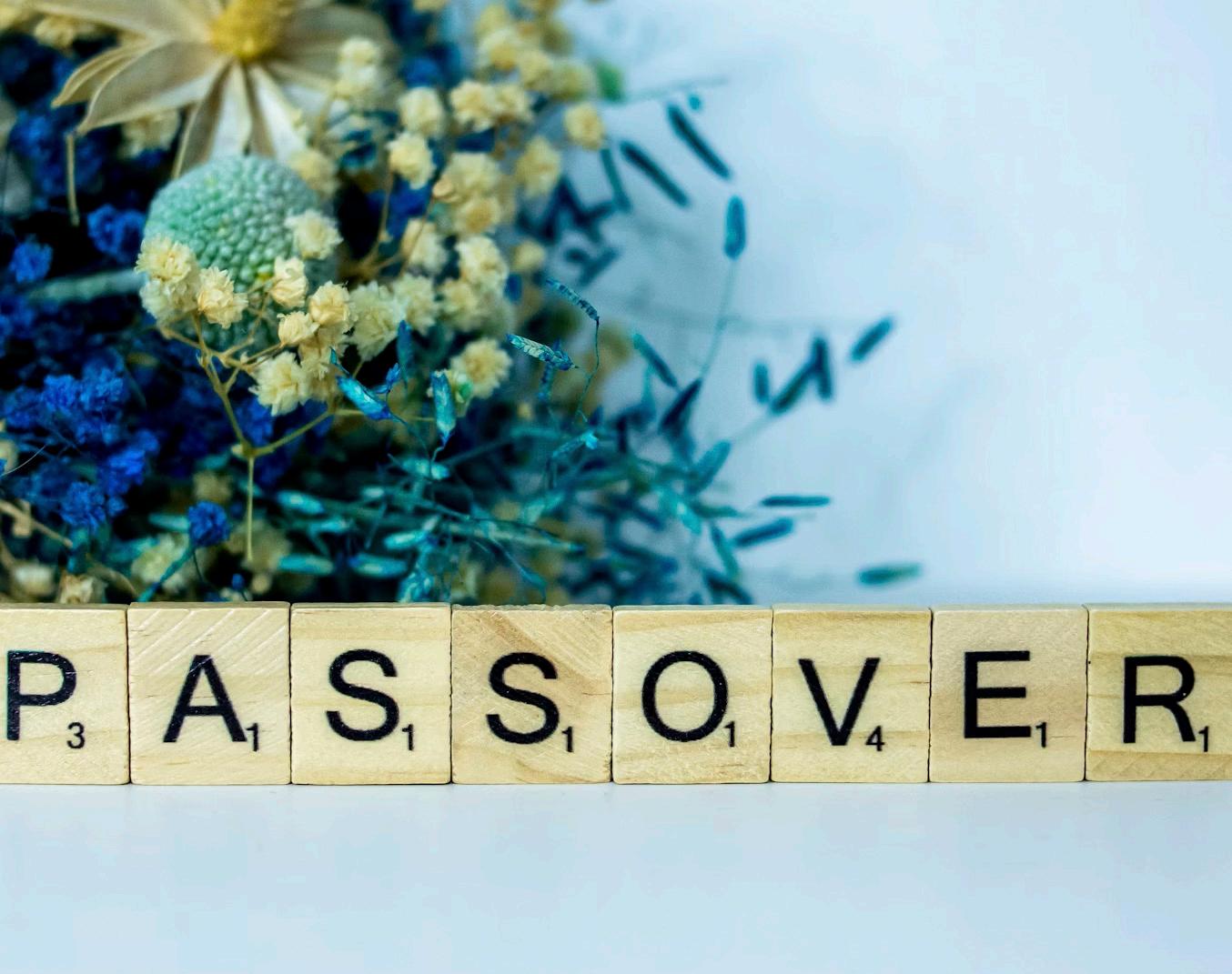
Answers: 1-false (we search the night before but do the burning the next morning), 2-false, 3-true, 4-true, 5-false (We start counting on the second night), 6-false (We may not even own chametz, which is why we clean our homes and sell whatever remains), 7-false, 8-false (Only grain that has risen is considered chametz, not grape or other substances), 9-true, 10-true.

Keeping Jewish | April 2024 |
figure them entire with wine it? 15 GAME FUN PAGE
Photo: Alex Shute/Unsplash
Supportedbythe CindyWoolMemorialSeminar forHumanisminMedicine



FOUR-WEEK COURSE STARTING TUESDAY, MAY 14
RABBI YEHUDA CEITLIN AT THE TUCSON JCC Register at ChabadTucson.com/JLI
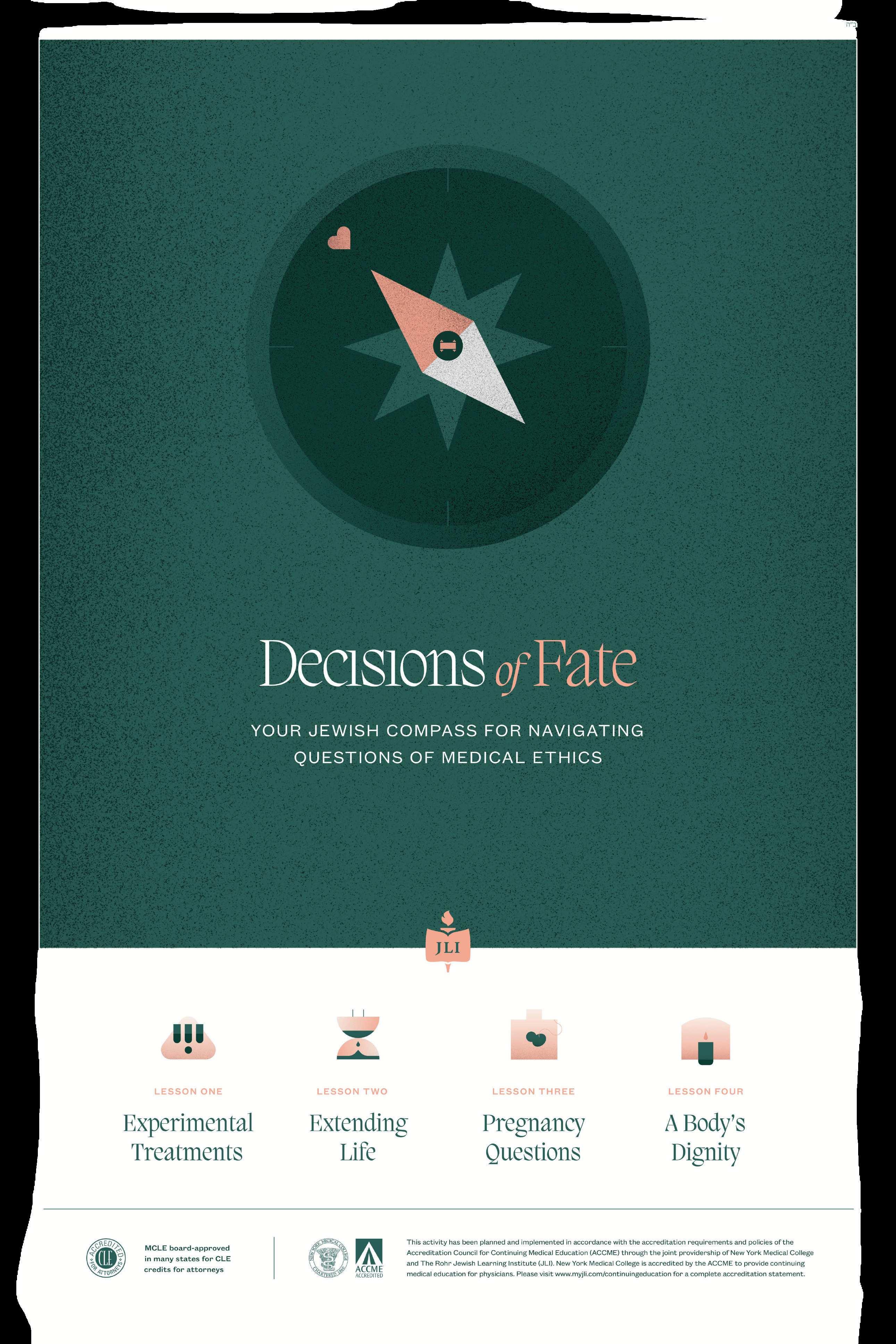



BSD

























 By Dr. Tevi Troy
By Dr. Tevi Troy










